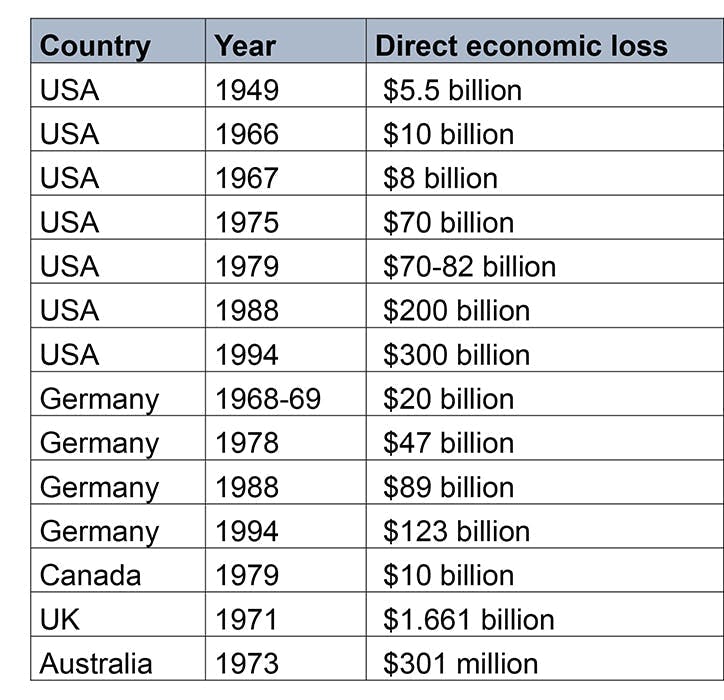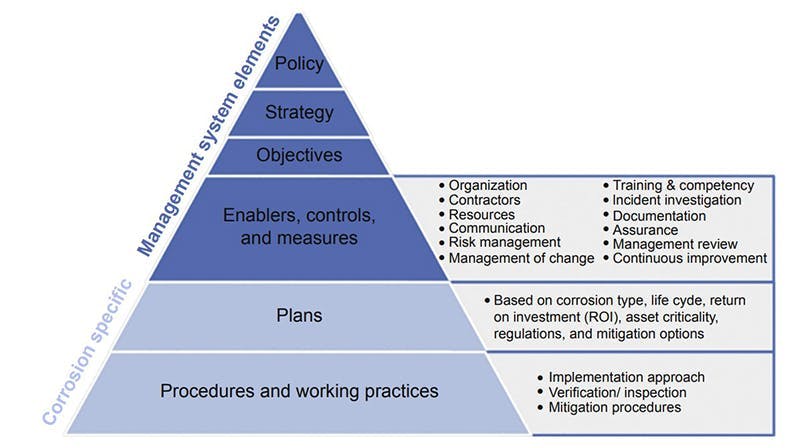Addressing the Effects of Corrosion on Heavy Equipment
Cranes and heavy equipment are indispensable in industrial operations, including construction, mining, rigging, and notably in hydrocarbon sectors. Consequently, business owners and contractors are required to adhere to high standards of maintenance, according to OSHA guidelines, to ensure a safe working environment for all employees. Leading maintenance operations on a financial scale poses a potential challenge for any maintenance organization managing its assets, which could be valued at millions, if not billions, of dollars.
Corrosion is defined as the gradual deterioration of metal components due to environmental factors like high temperature, humidity, and chemical exposure. It severely compromises the functionality of cranes and heavy industrial equipment, resulting in substantial economic losses, environmental pollution, and even loss of life. A comprehensive corrosion control policy is crucial to attain and sustain the requisite levels of quality, safety, and reliability within the maintenance organization.
Effects on cranes, heavy equipment: The neglect of corrosion-control measures in industrial settings has led to tragic outcomes, including loss of life, injuries, significant economic losses, and severe environmental damage.
Corrosion has been linked to numerous injuries and fatalities. For instance, on March 15, 2009, a 50-ton hydraulic crane accident at a construction site in New York City resulted in the death of seven individuals. While hoisting a heavy load, the crane suddenly collapsed. Investigations revealed that the crane's right lifting cylinder had been inadequately maintained, and corrosion had weakened the lifting cylinders.
Various national studies conducted in several countries over the past 50 years have consistently estimated the costs of corrosion to be around 3-4% of each nation's gross domestic product (GDP). Considering a global GDP figure of 3.4% (2013), the estimated worldwide cost of corrosion is a staggering US$2.5 trillion. Another study, conducted from 1949 to 1994, summarized the economic losses resulting from corrosion in the subsequent table.
Maintenance solutions for corrosion control: Maintenance solutions aimed at controlling corrosion are a crucial for industrial operations, ensuring the longevity, safety, reliability, and efficiency of heavy equipment and infrastructure. By adopting effective corrosion-control practices, it is estimated that significant savings, ranging from 15 to 35% of corrosion-related expenses, could be realized. This translates to annual global savings of approximately US$375 to $875 billion. These solutions encompass a variety of strategies, from protective coatings to predictive maintenance, all aimed at mitigating the destructive effects of corrosion. Implementing effective maintenance solutions not only protects valuable assets but also minimizes economic losses, environmental impacts, and potential safety hazards.
Following here are the best industry practices for maintenance solutions against corrosion.
International Standards
International standards are instrumental in guiding corrosion control and maintenance solutions for heavy industrial equipment, providing a universally recognized framework that emphasizes consistency, quality, and safety in practice. Below are some of the standards pertinent to corrosion control for cranes and industrial equipment:
1. ISO 12944. This standard outlines guidelines for protective coatings, covering aspects such as types of coatings, application methodologies, and inspection criteria. By adhering to these standards, a consistent approach to combating corrosion across various industrial settings is ensured, including those involving cranes and industrial equipment.
2. ISO 8502. This standard addresses the preparation of steel substrates before the application of paints and related products. It includes tests for assessing surface cleanliness and evaluating dust on steel surfaces prepared for painting. The ISO 8502 standard is applicable to cranes and heavy equipment built with steel structures.
Advanced Maintenance Methods, Technologies
Beyond adhering to international standards, there are several advanced methods and innovative approaches for maintenance solutions in corrosion control. These advanced methods and technologies, when integrated into corrosion control practices enhance corrosion mitigation.
Predictive maintenance, facilitated by condition-based monitoring, leverages the power of artificial intelligence (AI) and predictive analytics to forecast corrosion rates and refine maintenance schedules. Through the seamless integration of a multitude of sensors and cutting-edge technologies, condition-based monitoring programs continuously assess the health of equipment, collect and process data, and accurately detect any anomalies.
Advanced cathodic protection systems, such as Impressed Current Cathodic Protection (ICCP), offer more precise control over corrosion inhibition. This proactive strategy not only minimizes downtime but also optimizes maintenance efforts, ensuring that resources are deployed precisely when needed to combat corrosion effectively.
Furthermore, a Corrosion Management System (CMS) should be incorporated into the corporate maintenance program. Effective integration of corrosion management within an organization entails more than just technology; it necessitates the incorporation of corrosion decisions and practices within the organization’s management system. This integration extends from specific corrosion procedures to overarching organizational policies and strategies, encompassing all levels of the management system.
To maximize the benefits of corrosion management, it's critical to articulate traditional corrosion-control practices within the language and context of organizational policies, ensuring commitment to the corrosion management system across all organizational levels. This approach aids in managing corrosion-control processes throughout all stages of asset integrity management, as depicted in the following figure.
Providing methods and solutions for measuring and improving the effectiveness of maintenance is a key consideration for any maintenance organization. While corrosion control presents significant challenges and risks, proper maintenance processes and procedures can mitigate the detrimental effects. Corrosion control aims to ensure the efficient operation and upkeep of physical assets, be it a maintenance facility, a commercial building, or a fleet of vehicles. By adhering to maintenance guidelines and referencing international standards, any maintenance organization can enhance the safety, reliability, and longevity of their cranes and heavy equipment.
Abdullah Alghaithan, CMRP, is an OSS Engineer IV with the Saudi Aramco Mobility & Logistics Services Department. He holds a bachelor’s degree in mechanical engineering and is professionally accredited by the Saudi Council of Engineers.



